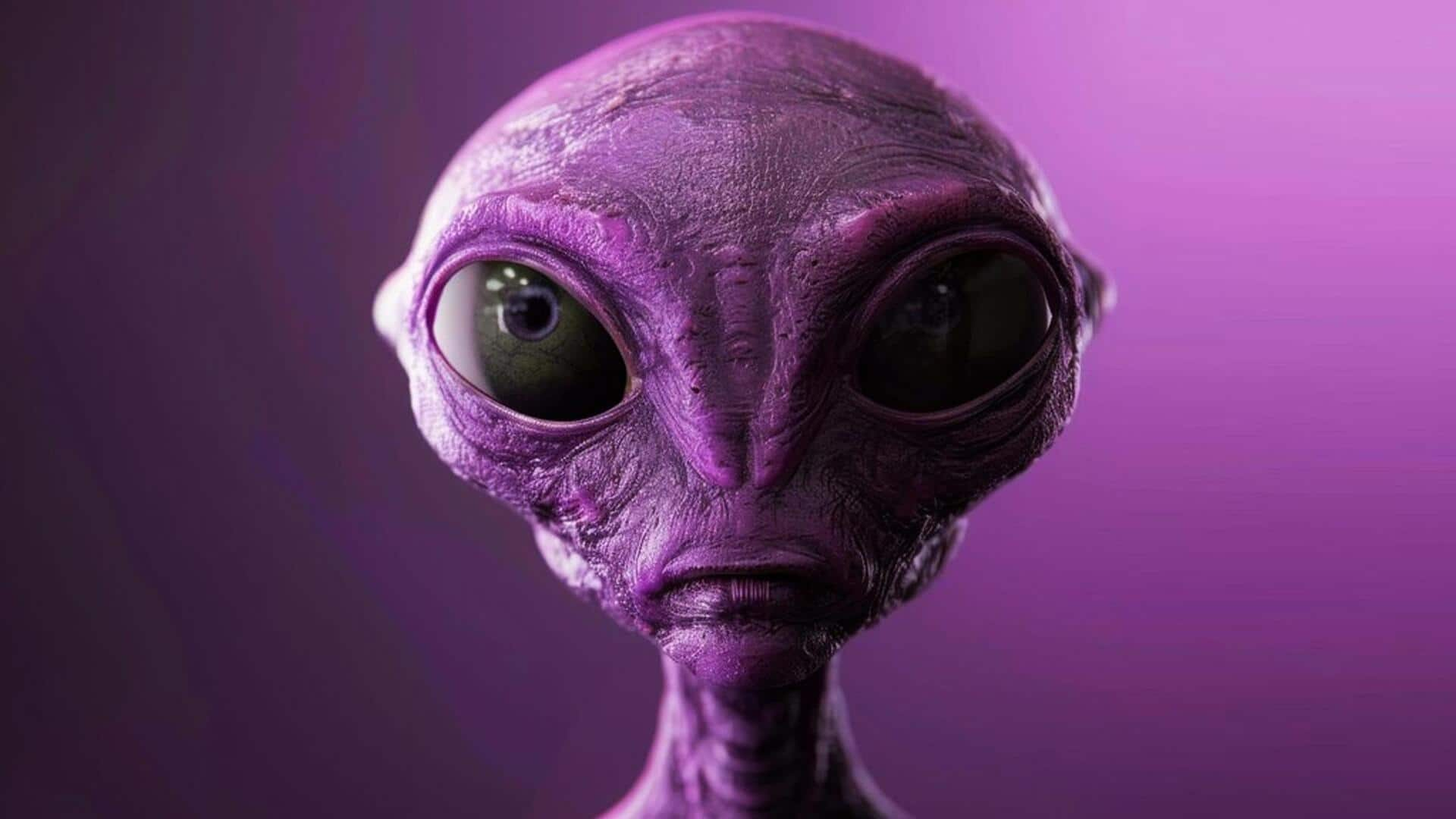
Alien life likely to be purple and not green: Research
What's the story
The quest for extraterrestrial life has taken an intriguing twist with scientists now proposing that alien life may be purple rather than green. This hypothesis challenges our Earth-centric perspective of life, which is predominantly green due to the oxygen-producing photosynthesis performed by organisms containing the green pigment chlorophyll. A research team from Cornell University suggests that life on an Earth-like planet orbiting a different star could appear quite distinct and possibly dominated by purple bacteria.
Purple life
Purple bacteria: The potential dominant life on alien worlds
Purple bacteria use invisible infrared radiation for photosynthesis in environments with little/no visible light or oxygen. These organisms contain purple pigments and could produce a unique "light fingerprint" detectable by advanced ground- and space-based telescopes. Coelho, a postdoctoral associate at the Carl Sagan Institute (CSI) and lead author of the study, stated that "Purple bacteria can thrive under a wide range of conditions, making it one of the primary contenders for life that could dominate a variety of worlds."
Alien database
The importance of a database for signs of life
The researchers stress the necessity of establishing a database for signs of life to ensure potential extraterrestrial life forms are not overlooked. Kaltenegger, CSI director and associate professor of astronomy, emphasized that "We need to create a database for signs of life to make sure our telescopes don't miss life if it happens." The CSI team is currently working on cataloging colors and chemical signatures that various organisms and minerals would display in an exoplanet's reflected light.
Bacterial adaptation
Purple bacteria: Thriving on low-energy light
The CSI team has collected samples from over 20 types of purple sulfur and purple non-sulfur bacteria from various environments. These bacteria flourish on low-energy red or infrared light using simpler photosynthesis systems that absorb infrared and don't produce oxygen. Coelho noted that these organisms, believed to have been common on early Earth before the emergence of plant-type photosynthesis, could be particularly suited to planets orbiting cooler red dwarf stars, the most common star type in our galaxy.
Alien biosignatures
Purple bacteria's potential dominance in alien worlds
After studying the purple bacteria's biopigments and light fingerprints, the researchers simulated Earth-like planets with varying conditions and cloud cover. They discovered that both wet and dry purple bacteria produced intensely colored biosignatures across a range of simulated environments. Coelho stated, "If purple bacteria are thriving on the surface of a frozen Earth, an ocean world, a snowball Earth or a modern Earth orbiting a cooler star, we now have the tools to search for them."